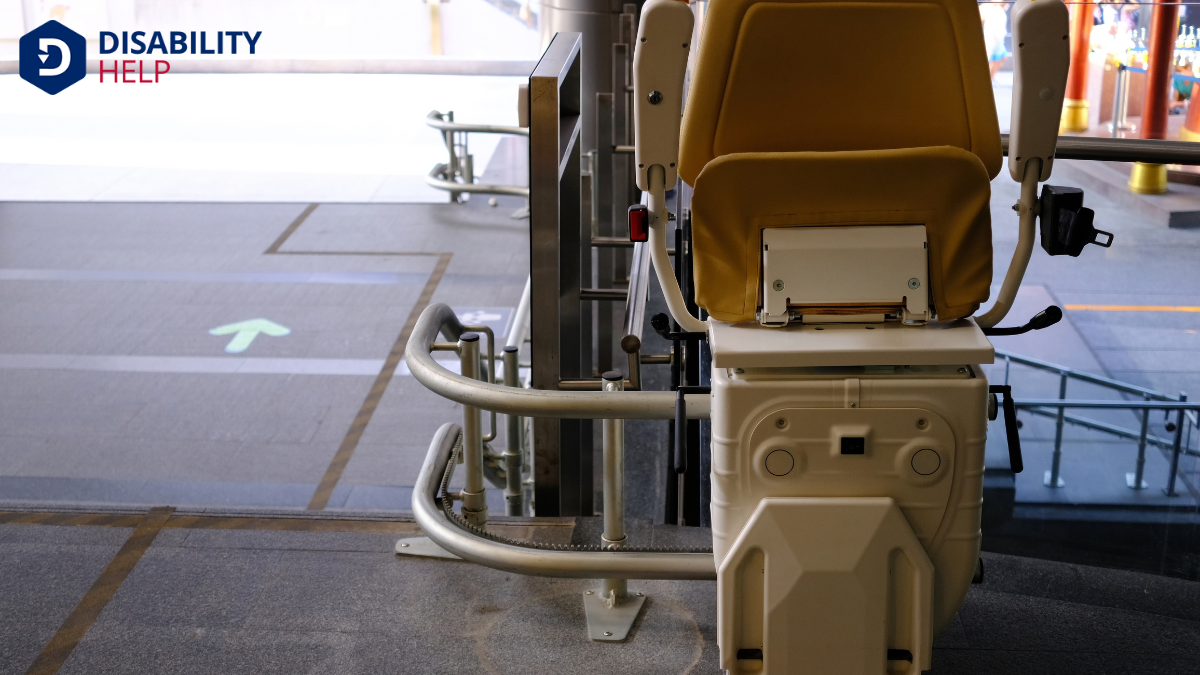When we're considering investing in a stair lift, it's natural to wonder about its longevity. Generally, stair lifts last between 10 to 15 years, but various factors play a role in their lifespan. Things like the type of lift, usage frequency, and maintenance all contribute to how long they serve us. Understanding these elements can help us make informed decisions and guarantee our stair lift remains a reliable aid for years to come. So, what exactly should we look out for?
Key Takeaways
- Straight and curved stair lifts typically last between 10 to 15 years.
- Quality materials and professional installation enhance the stair lift's longevity.
- High usage frequency can lead to faster wear and shorter lifespan.
- Regular maintenance and adherence to servicing guidelines extend the lift's life.
- Reputable brands offer durable models with extensive warranties for reliability.
Factors Affecting Stair Lift Longevity
When we consider the longevity of a stair lift, several key factors play an essential role in determining its lifespan.
First, the quality of materials and craftsmanship directly impacts durability. We should choose models built with robust components to guarantee they withstand daily use.
Installation quality also matters; professional installation reduces wear and tear, preventing premature breakdowns.
Regular maintenance is important, as it helps identify and fix minor issues before they escalate. We need to follow the manufacturer's guidelines for servicing schedules.
Additionally, the frequency of use affects longevity. Heavier usage naturally leads to more wear, shortening the stair lift’s life.
Average Lifespan of Different Stair Lift Types
Let's explore how different types of stair lifts measure up regarding lifespan.
Straight stair lifts typically last longer due to their simpler design and fewer mechanical parts.
In contrast, curved stair lifts, with their customized tracks, might require more maintenance, potentially shortening their longevity.
Straight Stair Lift Durability
Straight stair lifts, often considered the backbone of mobility solutions in multi-level homes, offer impressive durability. Typically, these lifts last between 10 to 15 years, depending on usage and maintenance.
Understanding what contributes to their longevity helps us make informed decisions.
- Quality of Installation: A professional installation guarantees the lift operates smoothly and reduces wear and tear.
- Regular Maintenance: Routine inspections and servicing keep mechanical parts in excellent condition, extending the lift's life.
- Usage Frequency: Lifts used less frequently tend to last longer, as they experience less mechanical stress.
Curved Stair Lift Longevity
Curved stair lifts, designed to navigate the complex turns and landings of uniquely shaped staircases, offer a reliable solution for homes with non-linear stairs.
These custom-built lifts are tailored to fit specific staircases, guaranteeing a precise and smooth ride. Typically, we can expect a curved stair lift to last around 10 to 15 years. Factors like usage frequency, regular maintenance, and environmental conditions can impact this lifespan.
To maximize longevity, it’s crucial to adhere to the manufacturer’s maintenance guidelines. Routine check-ups and timely repairs not only enhance performance but also extend the lift’s life.
Importance of Quality and Brand

When considering how long a stair lift lasts, we can't overlook the role of quality and brand.
Choosing a lift from trusted manufacturers often means better reliability and longevity, which ultimately provides peace of mind.
Let's explore how these factors influence the lifespan of your stair lift.
Reliability and Longevity
Choosing a stair lift isn't just about meeting immediate accessibilityThe design of products, devices, services, or environments to be usable by people with disabilities.... needs; it's also about ensuring long-term reliability and longevity. When we invest in a stair lift, we want it to serve us well for years.
A high-quality model from a reputable brand often translates into fewer repairs and a longer lifespan. By prioritizing reliability, we gain peace of mind and maintain independence in our homes.
Let's consider key factors that influence a stair lift's longevity:
- Construction Materials: Durable materials resist wear and tear, ensuring the lift's components last.
- Regular Maintenance: Routine check-ups and servicing can prevent issues and extend the lift's life.
- Usage Patterns: Heavy daily use may require more robust models designed for frequent operation.
Understanding these aspects helps us make informed decisions.
Trusted Manufacturers
While selecting a stair lift, we should consider the reputation and quality offered by trusted manufacturers. High-quality brands often provide more reliable and durable products, guaranteeing our investment stands the test of time.
These manufacturers have a track record of excellence and consistently deliver products that meet safety standards. When we choose a reputable brand, we're more likely to receive excellent customer service and support, which is vital for maintenance and repairs.
Trustworthy manufacturers also offer extensive warranties, which can save us money in the long run. By opting for a well-known brand, we minimize the risk of potential issues and assure peace of mind.
It’s important to research and compare different manufacturers to make an informed decision that best suits our needs.
Usage Frequency and Its Impact
Understanding how often a stair lift is used can greatly affect its longevity.
When we think about usage frequency, it’s essential to take into account how daily wear impacts the mechanics. If we use it several times a day, it's obvious that the components will experience more stress compared to occasional use.
Let’s break it down:
- High Frequency: Stair lifts used multiple times daily will wear out faster and might need earlier replacement.
- Moderate Frequency: Used a few times a day, these lifts last longer but still require attention to emerging issues.
- Low Frequency: Occasional use results in less wear, potentially extending the lift's lifespan.
Proper Maintenance and Care
To guarantee your stair lift lasts as long as possible, it’s important to commit to regular maintenance and care.
We should begin by routinely checking the lift's tracks for any debris or obstructions that might hinder its smooth operation. Lubricating the track and moving parts will help prevent wear and tear.
Let's also remember to inspect the seat belt, ensuring it’s functional and secure.
Regularly cleaning the lift with a gentle cloth keeps it free from dust and grime.
Additionally, scheduling professional inspections annually is vital. Technicians can identify potential issues early on and make necessary adjustments.
Signs It's Time for Replacement

When should we really start considering replacing our stair lift? It's important to recognize the signs indicating it's time for a replacement.
First, if our stair lift frequently breaks down, requiring constant repairs, it might be more cost-effective to invest in a new one.
Second, notice if it's becoming uncomfortable or feels less secure—safety is paramount.
Finally, watch for technological advancements that might offer improved functionality or features.
- Frequent breakdowns: Are we constantly calling for repairs?
- Comfort and security: Does it feel wobbly or unreliable?
- Technological advancements: Could new models better meet our needs?
Conclusion
In summary, let's remember that a stair lift's lifespan hinges on several factors, including the type, frequency of use, and how well we maintain it. Straight models generally last longer, but quality and brand also play a significant role. By staying on top of regular maintenance and following the manufacturer's guidelines, we can guarantee our stair lifts remain reliable for years. When we notice signs of wear, it's essential to evaluate replacement to maintain safety and efficiency.






